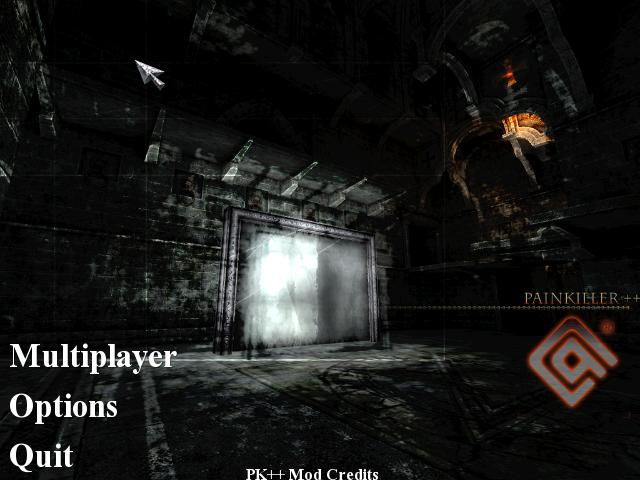PK++ on GitHub
Long ago I put PK++ on Sourceforge as open source. Since GitHub is more popular these days, I have put it there too.

You can find it here: https://github.com/EKBlowfish/PKPlusPlus
Should PainEngine Become Open Source? The Painkiller Community Weighs In
The Painkiller franchise holds a special place in the hearts of boomer shooter fans, known for its fast-paced action, unique movement mechanics, and gothic horror atmosphere. However, as the industry moves forward with newer engines like Unreal Engine 5, Painkiller: Black Edition (2004) and its classic multiplayer scene are left behind—stuck on a proprietary engine with no official updates.
A recent discussion in the community has brought up a compelling question: Should PainEngine and its later iteration, NecroEngine, be open-sourced?
The Legacy of PainEngine & NecroEngine
PainEngine powered multiple Painkiller titles, including:
- Painkiller: Black Edition (2004)
- Painkiller: Overdose (2007)
- Painkiller: Redemption (2011)
- Painkiller: Recurring Evil (2012)
NecroEngine, an evolved version, was used in NecroVisioN (2009) and its sequel NecroVisioN: Lost Company (2010).
Despite its age, the engine still holds up visually and mechanically, thanks to an active modding community keeping it alive with projects like Painkiller: Reload, NecroGenesys, and Revenge of Belial.
Why Open-Sourcing Would Be a Game-Changer
The biggest limitation right now? Painkiller: Black Edition’s source code remains closed. While modders can tweak game scripts, they can’t modify the core engine, limiting potential improvements. If PainEngine were partially or fully open-sourced, it could:
- Enable fixes and updates for modern systems.
- Improve netcode and movement mechanics for multiplayer.
- Allow modders to replace proprietary components (e.g., swapping Havok Physics for an open-source alternative like NVIDIA PhysX).
- Revive the competitive scene, which thrived in CPL tournaments (2004-2005).
The Problem: Who Owns PainEngine?
One of the major roadblocks to open-sourcing is uncertainty over the engine’s ownership. Since Painkiller: Hell & Damnation (2012) moved to Unreal Engine 3, it’s unclear who holds the rights to PainEngine and NecroEngine today. Without a clear legal path, fans are left hoping for a goodwill release from the current rights holders.
A Tale of Two Painkillers: Black Edition vs. Hell & Damnation
While Hell & Damnation was intended as a modern remake, it simplified many mechanics, alienating fans of the original’s high-speed, skill-based gameplay. Multiplayer, in particular, was a disappointment, lacking the depth of the original PK++ mod used in competitive play.
This divide further highlights the need for modders to have deeper access to the original Painkiller’s code—something that could be achieved if PainEngine were open-sourced.
Final Thoughts: A Lost Engine with Huge Potential
While a full open-source release is unlikely due to proprietary tech like Havok Physics, a partial release could still be incredibly beneficial. If the community had access to the engine’s core, they could work around missing components and modernize the game for new hardware and online play.
The only remaining question: who can make it happen?
Should PainEngine be open-sourced? Let us know your thoughts in the comments! 🚀
What Would a New Painkiller Game Look Like? – A Community Discussion
Fans of classic arena shooters have been reminiscing about Painkiller, a fast-paced FPS known for its brutal combat, over-the-top weaponry, and gothic horror aesthetic. A recent discussion on r/boomershooters sparked speculation about what a modern Painkiller sequel might look like.

Modern Engine & Visuals
Many players agree that a new Painkiller would likely be built on Unreal Engine, taking advantage of cutting-edge physics, destructible environments, and improved lighting to amplify the series’ intense action.
Evolution of Mechanics
While keeping the core arcade-like gunplay, fans are curious about how Tarot Cards, bosses, and progression systems could be expanded. One interesting suggestion was incorporating rogue-lite mechanics into the Tarot system, making each playthrough feel dynamic and rewarding.
Multiplayer & Co-op
A co-op mode seems like a natural fit for the game’s wave-based action, but opinions on PvP multiplayer are mixed. Some believe a Quake-style deathmatch could be revived, while others think it might distract from the single-player focus.
Quality-of-Life Improvements
To appeal to modern gamers, Painkiller would need refined controls, smoother movement mechanics, and better accessibility options without sacrificing its hardcore, old-school FPS roots.
Conclusion
A new Painkiller could bring back the best elements of classic boomer shooters while incorporating modern physics, improved visuals, and engaging progression mechanics. Whether it goes the rogue-lite route, expands multiplayer, or stays purely single-player, one thing is clear—the community is hungry for a return to Painkiller’s relentless, demon-slaying action.
Would you want a new Painkiller? What features would you like to see? Let us know in the comments!
Painkiller on Unreal Engine
Some time ago now, but in case you missed it: https://github.com/max-ego/PK
The GitHub repository max-ego/PK hosts a project that brings the classic Painkiller multiplayer experience to the Unreal Engine 4 platform. This initiative aims to recreate the fast-paced, arena-style combat of the original game with modern enhancements.
Key Highlights:
-
Modern Engine: By leveraging Unreal Engine 4, the project offers improved graphics, physics, and performance, providing a refreshed experience for both new and veteran players.
-
Community-Driven Development: As an open-source project, it invites contributions from developers and enthusiasts to refine gameplay mechanics, introduce new features, and ensure the game’s longevity.
-
Accessibility: The repository provides detailed instructions on building the project, making it accessible for those interested in exploring or contributing to the development process.
For those eager to revisit the intense multiplayer battles of Painkiller with contemporary improvements, this project offers an exciting opportunity. Explore the repository to learn more or get involved in its development.
